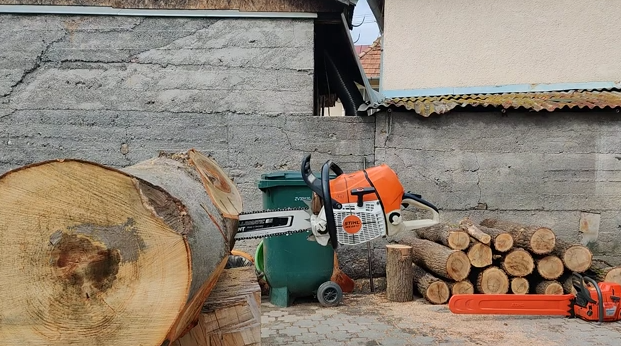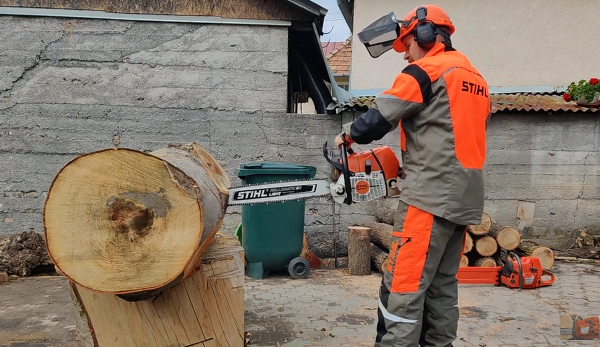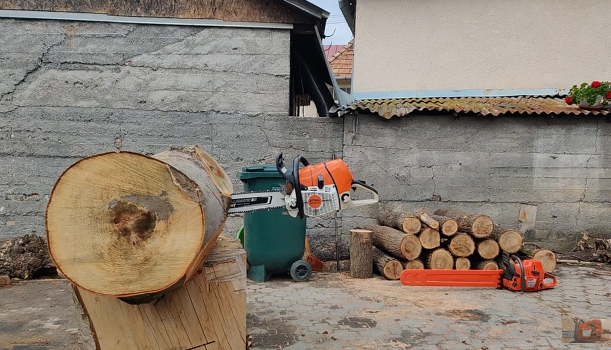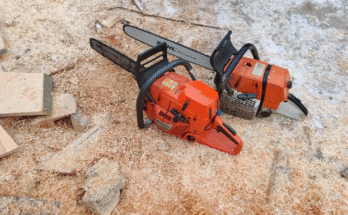
The STIHL MS 661 C-M is a high-performance professional chainsaw, designed for the toughest forestry jobs. It’s equipped with the M-Tronic engine management system, which offers automated engine tuning based on environmental conditions, fuel quality, and workload. A crucial part of maintaining peak performance is ensuring that the M-Tronic system is properly calibrated. This article will guide you through what calibration is, why it’s necessary, and how to perform the calibration process effectively.
What is STIHL M-Tronic?
Before diving into the calibration, it’s important to understand what the M-Tronic system does. Traditional chainsaws require manual carburetor adjustments to account for altitude, temperature, and other environmental changes. The M-Tronic system eliminates the need for manual tuning by electronically controlling the fuel mixture and ignition timing.
The M-Tronic system makes adjustments in real time, ensuring optimal engine performance, reduced fuel consumption, and lower emissions. However, after certain events—such as a major service, component replacement, or drastic environmental changes—the system may require a calibration to relearn the proper operating parameters.

When to Calibrate the MS 661 C-M
Calibration is not something you need to do every day. However, the M-Tronic system should be recalibrated under the following conditions:
- After replacing the carburetor or M-Tronic control unit
- After replacing or cleaning the air filter or spark plug
- After a long period of inactivity
- When using a different fuel mix or quality
- If the saw is not performing as expected (e.g., poor acceleration or idling issues)
- After significant changes in altitude or temperature
Performing a calibration helps the chainsaw “relearn” its ideal settings based on new conditions or parts.
Preparing for Calibration
Before starting the calibration, take these preparatory steps:
- Check the Air Filter: Make sure the air filter is clean. A dirty filter can affect air intake, skewing the calibration.
- Inspect the Spark Plug: The spark plug should be clean and properly gapped. Replace if fouled or damaged.
- Fuel Quality: Use fresh, high-quality fuel. A mix of 50:1 premium gas and STIHL 2-stroke oil is ideal.
- Warm-Up: The saw should be warmed up slightly before calibration but not hot. Start the engine and let it idle for about a minute.
- Environment: Perform the calibration in open air, not inside a closed workshop or garage.

How to Calibrate the STIHL MS 661 C-M
Now let’s walk through the step-by-step calibration process:
Step 1: Start the Saw
- Place the chainsaw on level ground.
- Make sure the chain brake is engaged for safety.
- Start the engine as you normally would. Let it idle for about 30 seconds to a minute.
Step 2: Initiate Calibration Mode
- Turn off the saw.
- Now, press and hold the throttle trigger fully open.
- While holding the throttle, start the saw. Continue holding the throttle wide open.
This step is critical. Holding the throttle open while starting signals the M-Tronic system that it should begin the calibration process.
Step 3: Let the Calibration Complete
- Keep holding the throttle wide open.
- The engine will rev up and down several times automatically.
- Do not intervene during this process. The chainsaw is adjusting and testing various operating parameters.
Calibration typically takes about 60 to 90 seconds. When the engine returns to a stable high-speed run and no longer fluctuates, the process is complete.
Step 4: Release the Throttle and Test
- Release the throttle trigger.
- Let the saw idle for a few moments.
- Then, test acceleration by gently squeezing the throttle. The saw should accelerate smoothly.
- Also check the high-speed performance under load (cutting wood) and make sure it feels strong and responsive.
If all checks out, the calibration was successful.
Signs of a Successful Calibration
After calibration, your STIHL MS 661 C-M should show:
- Smooth acceleration from idle to full throttle
- Stable idling without dying
- Strong, even power when cutting
- No bogging down under load
If these performance traits are present, the saw is tuned and ready for work.

Troubleshooting Calibration Issues
If your saw doesn’t perform well after calibration, consider the following:
- Air Filter or Spark Plug: If dirty or damaged, replace and recalibrate.
- Fuel Quality: Old or poor-quality fuel can cause inconsistent performance.
- Carburetor or Fuel Lines: Blockages or leaks can affect calibration. Inspect and service if needed.
- Exhaust Blockage: A clogged spark arrestor screen can restrict airflow and power.
- Software Fault: In rare cases, the M-Tronic module may have a fault. A certified STIHL technician can diagnose it with specialized tools.
Tips for Optimal M-Tronic Performance
- Use only fresh fuel (no older than 30 days).
- Keep the air filter and cooling fins clean.
- Avoid prolonged idling, which can cause carbon buildup.
- Don’t override M-Tronic settings with manual carb adjustments—it is fully automatic.

Why Proper Calibration Matters
Chainsaws like the MS 661 C-M are high-precision tools. Poor calibration can lead to:
- Reduced cutting power
- Increased fuel consumption
- Premature wear and tear
- Hard starting
- Engine damage due to lean running
Proper calibration ensures that your saw is working in harmony with its components, delivering maximum power, fuel efficiency, and lifespan.
Final Thoughts
The STIHL MS 661 C-M is a powerhouse chainsaw that, with proper calibration, delivers exceptional reliability and performance. The M-Tronic system is designed to make life easier for professionals by reducing the need for manual adjustments. But to get the best out of this technology, it’s important to understand how and when to calibrate it.
By following the simple steps outlined in this guide, you’ll keep your saw running at its best. Whether you’re a logger, arborist, or forest manager, proper calibration can make a huge difference in both productivity and safety.


